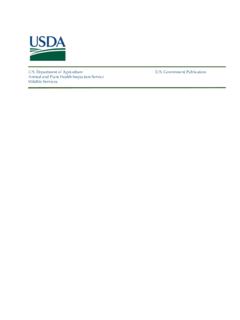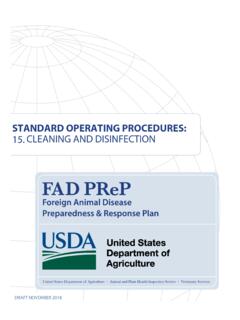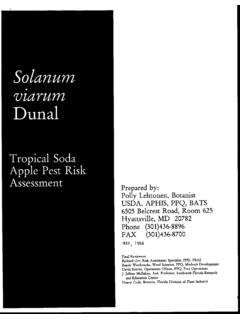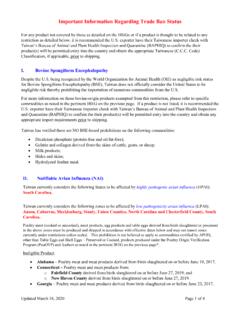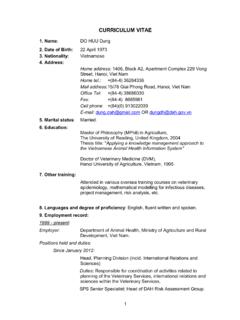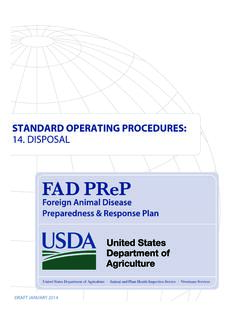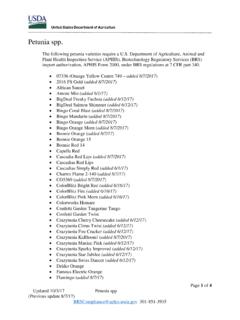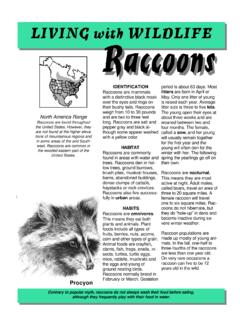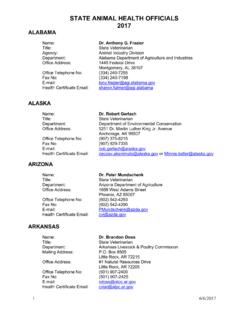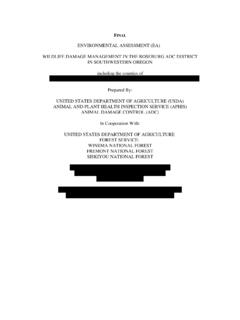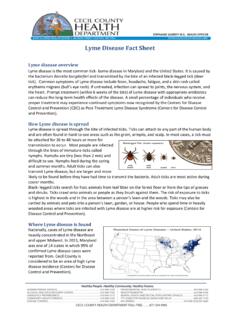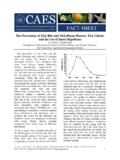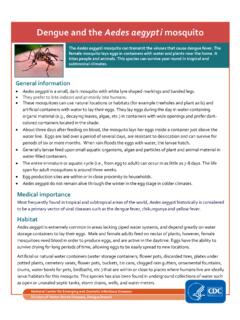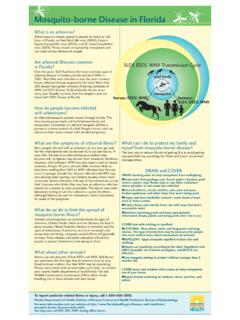Transcription of Prevent Avian Influenza at Your Farm - USDA
1 Avian Influenza is a disease found in wild and domestic birds. Although wild waterfowl rarely show signs of the disease, they can shed the virus into the environment through their oral and nasal secretions and feces. The viruses can cause severe illness and death in domestic birds. The Department of Agriculture s ( usda ) Animal and Plant Health Inspection Service (APHIS) is working closely with State and local officials and industry experts to assist poultry producers in the surveillance, reporting, and control of highly pathogenic Avian Influenza (HPAI). Experts are still evaluating how HPAI is spreading in the United is Key The best way to Prevent HPAI at your farm is by consistently using appropriate biosecurity measures. The usda and its industry partners provide a list of recommended biosecurity measures at You can build upon and enhance these measures with the addition of simple wildlife management practices around your farm. The following management practices can help you Prevent wild birds and other wildlife from coming into direct contact with your poultry, as well as wild bird fecal material and secretions from being accidentally transported on boots, equipment, and food to your birds.
2 Prevent Avian Influenza at Your Farm Improve Your Biosecurity with Simple Wildlife Management PracticesAnimal and Plant Health Inspection Service July 2015 Remove standing water Grade property to avoid pooling of water. Fill areas where water stands for more than 48 hours. Workers should avoid walking or moving equipment in or near standing water used by wildlife. Consider French drains and culverts to carry water away from poultry risks at ponds and basins Do not use untreated surface water for watering poultry or cleaning poultry barns and other facilities as it may be contaminated. Consider removing vegetation from the banks of man-made water structures. Use deterrent techniques ( wire grids, predator decoys, and scare devices) to keep waterfowl from using water bodies near poultry barns. Use fencing to separate natural ponds or vegetation areas from the active area around food sources Do not feed wildlife.
3 Locate feed structures on a clean pad. Inspect pipes and connections regularly for leaks. Keep a broom and lidded garbage container at every feed storage area for quick clean-ups. Natural wildlife feed such as grass seeds, insects and fruit trees, may also be present: Mow frequently Do not pile used litter near barns Remove fallen fruit1. Reduce wildlife attractantsCover waste Keep carcasses covered at all times. Close and latch dumpster and trash can lids. Department of Agriculture is an equal opportunity provider and employer. 2. Prevent wildlife accessRemove perches, plug holes Repair holes and tears in barn walls. Remove unnecessary ledges or horizontal surfaces. Install exclusionary netting, screens, and perch deterrents, such as repellent gel or bird spikes. Before nesting season begins, wash away or remove old nests in accordance with state and federal regulations. Please note it is unlawful to remove nests with eggs or young in them at any time of year.
4 Inspect foam installation for signs of rodent or bird digging, chewing or Add wildlife deterrentsMove and replace scare devices frequently Move decoys and scare devices frequently to improve effectiveness. Pyrotechnics can be effective, but require dedicated and trained personnel and may be stressful to poultry. NOTE: usda and other experts do not recommend the lethal removal of wild birds in order to Prevent the spread of HPAI. Because of the high number and constant movement of wild birds, the use of lethal methods is neither practical nor environmentally sound. Producers who are concerned about wildlife accessing areas near their poultry facilities can contact their usda -APHIS Wildlife Services state office at 1-866-4 usda -WS (1-866-487-3297) for assistance. They can also visit the usda website at to learn more about Avian Influenza and recommended biosecurity practices.
